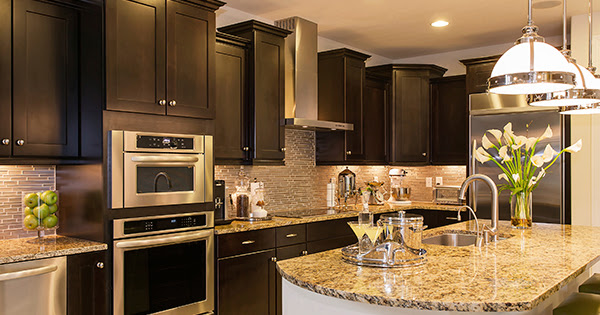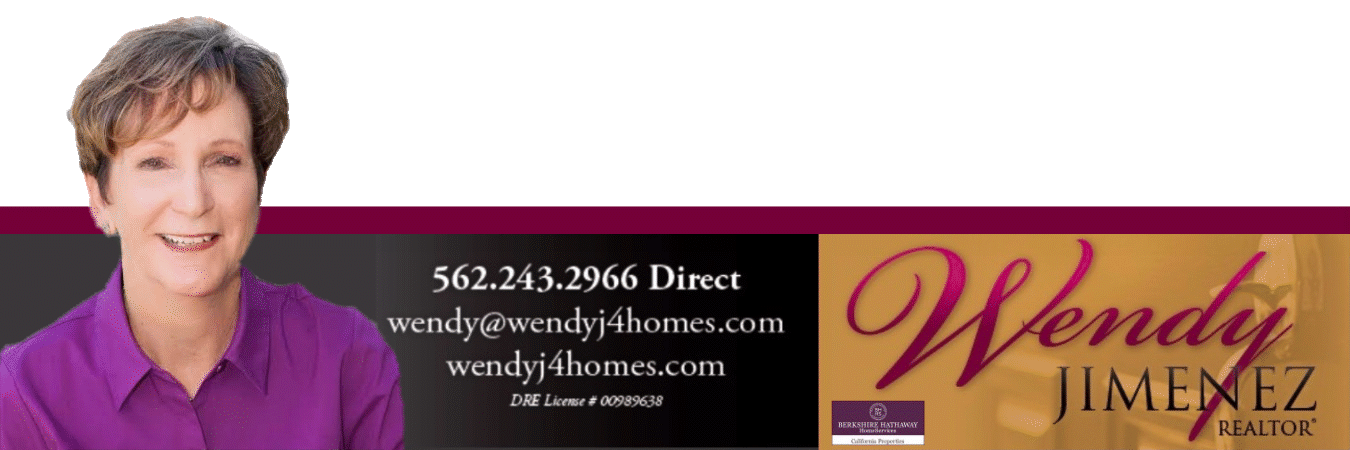
Saturday, May 23, 2015
Thursday, May 21, 2015
Tuesday, May 19, 2015
Decorate Like a Designer to Give Your Life Color
An infusion of color can transform a space or even an entire home. Experimenting can show off your personal style, but can be a little risky, as it’s not always easy to pick the perfect palette. Use these tips to get inspired, and begin thinking like a designer:
Understand the Basics:
The best color for a space depends on light, textures, things you already own, and the way one room flows into the next.
When choosing a color, consider the lighting and how it shifts throughout the day. Even the type of bulb you choose will change the look. Know how to choose the right paint sheen for your space. When selecting paint for your home, color is likely your first consideration, but the sheen of a paint is just as important. A paint’s sheen is the amount of light it reflects, which can dramatically change how a color looks in your home. In addition, sheen can actually affect the performance of the paint.
- FLAT/MATTE requires fewer coats; best for slow-traffic areas, like ceilings and bedrooms
- SATIN/EGGSHELL boasts a more durable sheen; ideal for high-traffic areas and small spaces
- SEMI-GLOSS/GLOSS more resistant to dirt and scuff marks; easier to clean
- HI-GLOSS incredibly durable, stain resistant, and easy to clean; will highlight flaws
Navigate the Color Wheel:
The color wheel is the best (and easiest) way to choose color schemes that work, for both beginners and experts.
The classic color wheel is made up of 12 different hues. These hues are classified into 3 categories:
These 12 basic colors allow you to mix endless combinations of hues. Every combination can then be broken down for even more variety by adding to that color, like white (to tint), black (to shade), or grey (to create tones). With these endless possibilities . . . how do you choose even one color, let alone a palette for your home?
Classic Color Combinations:
One-color rooms are peaceful, allowing the eye to move easily without interruption by other colors. Contrast is created by using tints, shades, or tones of the same hue. In the examples, one hue is muted to a neutral, and then brightened up as an accent to keep it all in the family.
Analogous colors lead to soft, transitioning palettes that blend and change seamlessly. Often resembling nature’s palettes—think of sunsets or ocean waves—choose two or more neighboring colors for an analogous color scheme.
Choose two colors that are directly opposite each other on the wheel for a complementary color combination. The contrast creates interest and energy, but remains sensible and pleasing to the eye.
When strong contrast exists, balance is key. Choose 3 equally spaced colors on the wheel for a triadic color scheme, being careful to select one of the three as your main color and using the other two as accents.
This combination is pulled together by from 2 (almost complementary) colors. Choose a base color, find its complement, and then choose the hue to the right or left of the base color’s complement. You’re left with more subtle contrast by not choosing a color’s exact opposite.
Practical Tips for Your Home:
Blend Rather Than Match.
Every element in a chosen color shouldn’t match exactly. Use the entire family of tones, tints, and shades throughout the room (for example, a vase that’s a tint of the wall color). Variations keep rooms from looking overdesigned.
Neutralize for Balance.
Lots of brights? Add a neutral to balance it out. Or start with a neutral scheme, and add pops of colorful accents.
No Favorite Color?
What about a favorite photo, piece of artwork, or favorite sweater? Is there a pattern in the colors you are naturally drawn to? This will help you establish where you want to begin.
Brightening Dark Rooms.
In low light rooms, shadows become distinct, making a space feel even darker. Choose a color that absorbs shadows to brighten it up. Contrary to what you may think, light colors won’t work; try a saturated, rich hue, like a jewel tone. Dark rooms allow you to experiment—even if the color looks too bright, super-saturated colors mellow in shadows.
Color Illusion.
Paint two adjacent rooms the same color to give the appearance of an open floor plan. Use the same colors and patterns in the master bedroom and bath to create an en suite feel.
Existing Considerations.
Don’t forget to factor in woodwork, furniture, flooring, or countertops. Choose colors that will work with those elements already in place. The same advice can be said when choosing home accents and new furniture. Use our printable Color Guide for an on-the-go resource for your home’s color palette to have on hand when you spot that perfect shade of fabric or other home accent.
Here’s What’s #Trending:
Naturally robust and earthy, Marsala is a reddish shade that’s comparable to a wine and terra-cotta.
Try Similar Swatches from Other Top Brands.
BEHR: Rich Brocade MQ1-21
SHERWIN-WILLIAMS: SW 7591 Red Barn
BENJAMIN MOORE: Cinnabar
Dial Down.
Tone down color schemes by adding white to create tints of bold colors. Even a primary palette can be muted enough to look elegant and not elementary.
Not Ready to Commit?
If you are worried about being overwhelmed by color, use it in smaller doses to accent rather than dominate. Accent with colorful accessories and artwork to see how much you enjoy living with a certain hue.
Monday, May 18, 2015
Prepping your home for market is a catch-22. You want to make sure it’s in nice enough condition to catch the buyer’s eye, but you don’t want to spend any more money than need be, especially on projects that won’t improve your home’s appeal. And while it’s always a good idea to have your realtor do a walk-through of your home so you can get a better idea of where you should prioritize your home improvement dollars, there are four areas that every buyer notices. Thankfully, we’ve got solutions that will satisfy any budge
Kitchen
If there’s one room in your house that can make or break the sale, it’s your kitchen. However, it’s a tough room to get perfect since every homeowner has their own vision of what their dream kitchen looks like. The key is to make it appealing enough that potential buyers can picture themselves cooking in it without having to make a ton of upgrades immediately upon moving in.
If you don’t have the budget to make major improvements, a fresh coat of paint and new cabinet hardware can make a huge impact. Have older cabinets but don’t have the budget to replace them? Refacing them is a cost-effective way to get the new-cabinet look without the new-cabinet budget. Last but not least, if you have the budget, a wholesale remodel could be the right call if your kitchen is far below the standard expected from homes being sold in your price range.
If you don’t have the budget to make major improvements, a fresh coat of paint and new cabinet hardware can make a huge impact. Have older cabinets but don’t have the budget to replace them? Refacing them is a cost-effective way to get the new-cabinet look without the new-cabinet budget. Last but not least, if you have the budget, a wholesale remodel could be the right call if your kitchen is far below the standard expected from homes being sold in your price range.
While kitchens can wow, bathrooms are just as important. The rest of your home might be stunning, but dated and dull bathrooms could send potential buyers straight for the door. Thankfully, there are a few things you can do to spruce up your loo.
If your bathroom is in good shape but could use a few modest updates, installing a new mirror and updating the light fixtures is an easy and affordable way to modernize the room. Need to update the space but don’t have the budget for major changes? Installing a new sink and faucet, plus a high-efficiency toilet are upgrades that make an impact without putting a serious dent in your wallet. Of course, it could be that your bathroom needs some major love. In that case, we recommend updating your tub and/or shower, installing new tile flooring, and replacing your cabinets and countertops.
If your bathroom is in good shape but could use a few modest updates, installing a new mirror and updating the light fixtures is an easy and affordable way to modernize the room. Need to update the space but don’t have the budget for major changes? Installing a new sink and faucet, plus a high-efficiency toilet are upgrades that make an impact without putting a serious dent in your wallet. Of course, it could be that your bathroom needs some major love. In that case, we recommend updating your tub and/or shower, installing new tile flooring, and replacing your cabinets and countertops.
Flooring is the kind of thing that you only notice when it’s really, really amazing, or really, really ugly. And when it comes to selling a home, it’s a feature that every buyer scrutinizes. Here’s what you can do to make your flooring a feature that sells.
Want a quick and inexpensive way to add new life to your floors? Hire a pro and have them professionally cleaned. Hardwood floors lost their luster? Refinishing them will have them looking like new for a fraction of the cost of replacing them. That being said, if you really want to make an impact, installing new hardwood flooring is an investment that’s sure to impress.
Want a quick and inexpensive way to add new life to your floors? Hire a pro and have them professionally cleaned. Hardwood floors lost their luster? Refinishing them will have them looking like new for a fraction of the cost of replacing them. That being said, if you really want to make an impact, installing new hardwood flooring is an investment that’s sure to impress.
These days the hottest feature a home can have is being energy efficient, especially when trying to sell an older home. Think about it: if you were buying a home, would the idea of spending extra money to make it more efficient make you think twice about buying it? For many, that answer is yes.
If your HVAC system is up-to-date, or you simply don’t have the budget to make major improvements, there’s one affordable upgrade you can make that could take big bucks off your utility bill. For at little as twenty-five dollars you can install a programmable thermostat that will give you the flexibility to create a more efficient heating and cooling schedule. For those of you with slightly bigger budgets, installing ceiling fans in bedrooms and common areas is a great way to give your HVAC system a boost. Last but not least, if your HVAC system is older than 15 years and requires frequent maintenance, it’s probably time to upgrade your system. While the initial costs might be higher, installing a new, high-efficiency system is an upgrade that could be the difference between selling your home and watching it linger on the market.
If your HVAC system is up-to-date, or you simply don’t have the budget to make major improvements, there’s one affordable upgrade you can make that could take big bucks off your utility bill. For at little as twenty-five dollars you can install a programmable thermostat that will give you the flexibility to create a more efficient heating and cooling schedule. For those of you with slightly bigger budgets, installing ceiling fans in bedrooms and common areas is a great way to give your HVAC system a boost. Last but not least, if your HVAC system is older than 15 years and requires frequent maintenance, it’s probably time to upgrade your system. While the initial costs might be higher, installing a new, high-efficiency system is an upgrade that could be the difference between selling your home and watching it linger on the market.
Friday, May 15, 2015
Monday, May 11, 2015
Homeowners: We Need to Sell Your House Twice

“…a sudden increase in appraisals reflecting market values well below what had been expected. In some cases the low appraisals had merely required the restructuring of the loan, in others they killed the deal.”The National Association of Realtors revealed this month that 8% of the contracts that fell through over the last three months were terminated because of appraisal issues. MND decided to survey their members and ask why this sudden increase in “short” appraisals could be taking place. Here is one result of that survey:
“Almost everyone we spoke to mentioned Fannie Mae's new Collateral Underwriter (CU).”Collateral Underwriter provides a risk score on individual appraisals which will lead to a ranking of appraisals by risk profile, allowing lenders to identify appraisals with heightened risk of quality issues, overvaluation, and compliance violations. It went on-line on January 26. Marianne Sullivan, senior vice president of single-family business capability with Fannie Mae believes that CU is not a problem for appraisers. Sheclaimed:
“From an appraiser perspective, one of the lender's responsibilities has always been to review the quality of an appraiser, and they have been using various methods to do that forever. I don’t think appraisers will find this tool to be disruptive.”However, some think that CU has caused appraisers to become too cautious with their appraised values. One mortgage professional in the MND article explained it this way:
"My personal opinion is that appraisers are being overly conservative in choosing comps because of CU. If CU questions the comps, adjustments, etc., the appraiser would have to do a lot of extra work to justify them. I had anticipated that CU would cause delays because of this extra work, but it seems that appraisers are one step ahead and are being ultra conservative, thus avoiding the extra work in the first place. I haven't spoken to an appraiser about it; this is just my interpretation of what I am seeing."Ryan Lundquist, a Certified Residential Appraiser in the Sacramento area, agreed:
“One of the unintended consequences of CU may be more conservative appraisals.”
Bottom Line
We must realize that, in today’s housing market, every house must be sold twice and the second sale (to the bank’s appraiser) could be the more difficult one.Friday, May 8, 2015
4 Reasons To Move-Up This Spring

1.) Buyer Demand is High & Inventory Is Low
Recent numbers show that buyer demand is at the highest peak experienced in years, and inventory for sale is at a 4.6 months supply, which is still markedly lower than the 6.0 months needed for a historically normal market. The National Association of Realtors, Chief Economist, Lawrence Yun put it this way, "Demand in many markets is far exceeding supply, and properties in March sold at a faster rate than any month since last summer." Listing your home today can greatly increase exposure to buyers who are out in force and ready to act.2.) Prices Will Continue to Rise
The Home Price Expectation Survey polls a distinguished panel of over 100 economists, investment strategists, and housing market analysts. Their most recent report projects appreciation in home values over the next five years to be between 11.7% (most pessimistic) and 27.5% (most optimistic). The bottom in home prices has come and gone. Home values will continue to appreciate for years. Waiting for your current home’s value to increase before selling could price you out of your new home if you aren’t careful.3.) Mortgage Interest Rates Are Still Near Record Lows
As we reported last week, interest rates have remained below 4% for some time now, and are substantially lower than the rate previous generations paid when getting a mortgage. The Mortgage Bankers Association, Fannie Mae, Freddie Mac & the National Association of Realtors are in unison projecting that rates will rise over the next 12 months. An increase in rates will impact YOUR monthly mortgage payment. Even an increase of half a percentage point can put a dent in your family’s net worth. Whether you are moving up or buying your first home, your housing expense will be more a year from now if a mortgage is necessary to purchase your home.4.) It’s Time to Move On with Your Life
The ‘cost’ of a home is determined by two major components: the price of the home and the current mortgage rate. It appears that both are on the rise. But, what if they weren’t? Would you wait? Look at the actual reason you are buying and decide whether it is worth waiting. Have you always wanted to live in a certain neighborhood? Would a climate change be just what the doctor ordered? Would you like to be closer to family?Bottom Line
If the right thing for you and your family is to move up to your dream home this year, buying sooner rather than later could lead to substantial savings.Wednesday, May 6, 2015
Subscribe to:
Posts (Atom)


![The Difference Your Interest Rate Makes [INFOGRAPHIC] | Keeping Current Matters](https://blogger.googleusercontent.com/img/proxy/AVvXsEidcfstk0OQ4KryaVa_sSpvNg9uqy3tm83w9LX47A-Dj8OCjUsw8GylD2fTG56lU2WmP8wDHCTiAu-Dj5MHhv5KpQJFC5laXXc1aJ0-1qIiNeJ97krNXIREZ0r3yoYNQzfR2JIELyzXNSPFk21c9G02aNQlBUCNf2osbc7uYAewcXsW7RsvEjij5I-bXTC81TIaC5Rp=s0-d-e1-ft)
